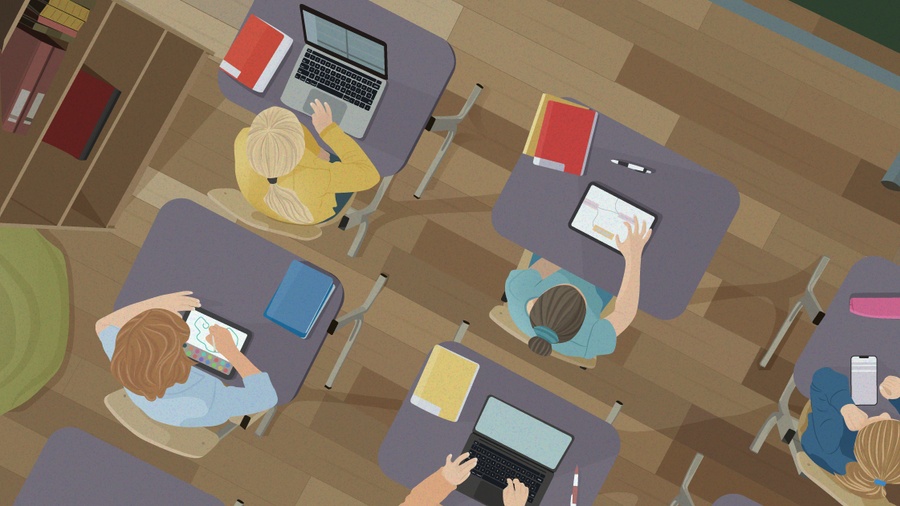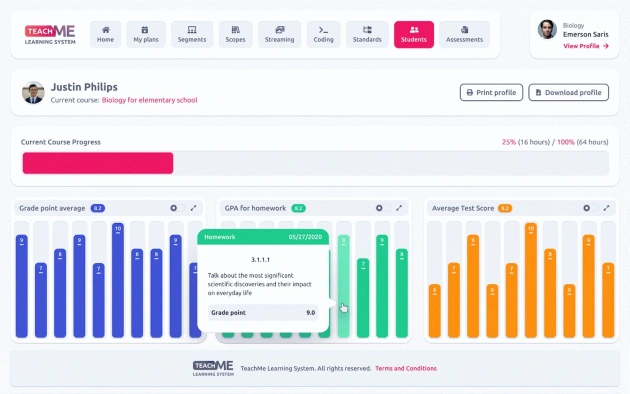Two years after the lockdown, the world is still reeling from the impacts of the pandemic. While many industries have been affected, the pandemic has had devastating effects on the education sector, especially students.
One proven way to tackle pandemic-related learning difficulties is by building and modeling effective learning recovery programs. These systems improve academic growth and empower students to thrive.
This article will cover everything you should know about learning recovery programs. We’ll cover their benefits, how schools can use them, and in what areas.
Let’s get started!
What are learning recovery programs?
Learning recovery programs are educational systems built to accelerate academic learning and growth. These models help make up for lost time for students who, due to uncontrollable circumstances, couldn’t be in classroom learning.
These eLearning systems provide tailored educational software that helps students meet grade-level standards. It also helps students with cognitive disabilities affected by the disruptions to learn in a self-paced environment and progress in their grade-level curriculum.
The pandemic is the biggest reason why learning recovery programs are crucial.
But don’t just take our word for it.
This Mckinsey research shows that the pandemic has set students behind by up to 12 months! Disruptions in the educational sector have driven considerable losses and inequalities in learning.
For example, school closures could amount to losses of $10 trillion for the affected children’s future earnings.
Learning recovery programs provide accelerated student support without jeopardizing their health.
A system like this is for now and the future.
The educational sectors that need learning recovery programs more
The pandemic has brought severe inequalities in education. There is no better time to put learning programs in place than now.
Students’ peer-to-peer relationships have also taken a hit. And teachers have been out of work for so long.
Here are some crucial ways that the educational sector can use learning recovery programs to achieve more:

1. Integrate the Curriculum
The pandemic has affected the curriculum the most. Some students have missed out on nearly two grades. But a learning recovery program can merge the curriculum. This helps tutors focus on the essential educational materials and align the content to their learning levels. This targeted instruction reduces the number of subjects by teaching the fundamentals needed for literacy.
2. Visualized Learning
Before the pandemic, students had access to visual content in class that helped them understand topics better.
But learning recovery technologies ensures this doesn’t change.
For example, AR/VR-enabled eLearning platform can provide students with enhanced visuals. This solution offers a 3D-animated visualization of what is being taught. So, it becomes easier for students to study and understand in this challenging time.
3. Peer-to-Peer Engagement
In-person education creates more student-to-tutor and student-to-student interaction. But due to the pandemic, the in-person opportunities have ceased. However, many eLearning programs can bring this back without exposing students to health hazards.
Technology-assisted learning programs can help teachers engage a larger group of students simultaneously. These synchronous learning programs ensure students learn in a similar way, just as they do in classrooms. The difference is that they have access to their grade-level materials. And most importantly, they engage with their peers and teachers without being exposed to health risks.
4. Extending Instructional Time
A learning recovery program can help regain lost learning by moving students closer to the level they would’ve been without the pandemic. Economists have shown a positive relationship between extending instructional time and student performance.
Another study showed that adding just two to six weeks of instruction time achieves the same result as 36 weeks of high-dosage tutoring yearly per student. With the pandemic taking between 4 to 12 months away from students, a highly-structured and customized learning recovery program can help students regain lost time.
For example, a custom eLearning solution such as TeachMe helps teachers manage educational materials and track student progress. These students will speed up their learning while in the safety of their homes.
5. Self-Paced Learning Environment
Students have different learning capabilities. And being out of school for so long will have different degrees of impact on each student.
Although technology-assisted systems provide an opportunity for synchronous learning, the education sector can also benefit from asynchronous learning. This learning recovery program enables students to learn at their own pace by giving them access to grade-level educational materials.
This provides a learning management system (LMS) that delivers educational content to each student. Students can conveniently access grade-level educational materials at their convenience and pace.
Benefits of eLearning programs post-pandemic
Besides the above crucial needs, other subtle benefits that eLearning programs bring include:
- Helping teachers assess each student’s learning levels after the long break.
- Developing the students’ psychosocial health and well-being after the inactivity.
Provides flexible and convenient learning for students. - Ensures the continuity of peer-to-peer relationships that existed pre-pandemic.
Examples of learning recovery programs for different educational needs
Implementing a learning recovery program has never been easier. Schools and tutors can leverage different customized solutions based on their needs.
For example, schools that have lost up to 12 months may need to integrate curriculums with a learning management system tailored to this need, e.g., TeachMe.
- TeachMe is a custom educational platform that serves as a connection between teachers and students. It can also track each student’s recovery progress and is a source of information for schools.
Other schools that may not have lost as much time but need to improve instructional efficiency can leverage eLearning software solutions such as AR/VR.
- AR/VR eLearning solutions provide the latest technology that enables students to learn with 3D visuals. This speeds up the learning recovery process and ensures the best academic impact after a long time away from school.
- Competitive learning games can increase student engagement and simplify learning assimilation by up to 30%, making them highly effective in speeding up learning recovery.
Schools can also implement eLearning solutions such as mobile eLearning apps, fully-featured student management & administration solutions, and corporate solutions for the tutors.
Conclusion
Learning recovery programs can help students get back on track and make up for the lost time during the pandemic. For some students with cognitive disabilities, these eLearning solutions ensure they aren’t far from their peers. Leveraging a recovery program is more important now than ever. Schools can use these customized systems to make learning more accessible to their students and accelerate recovery. It also improves peer-to-peer and teacher-student relationships — all in a safe and convenient environment.
Aristek is a leading eLearning and EdTech software solutions company with a proven portfolio of educational services. We can create custom-tailored eLearning software development solutions for schools to help their students step up recovery from the pandemic. Contact us now to learn more about our services.







